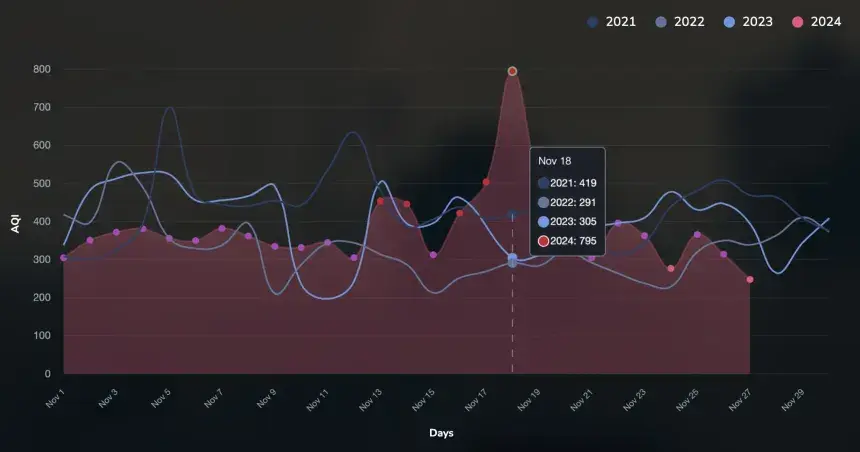The major causes of air pollution in Delhi are a combination of natural factors, local emissions, and regional contributors. Here's a breakdown:
Vehicular Emissions
(Contributes ~30-40% of Delhi’s PM2.5 pollution)
High number of petrol/diesel vehicles, poor fuel quality (especially in older vehicles), and traffic congestion worsen emissions. Two-wheelers, diesel trucks, and taxis are significant sources of nitrogen oxides (NOx) and PM2.5.
Industrial Activities
Industries (especially in neighboring areas like Ghaziabad, Faridabad, Noida) emit large amounts of SO₂, NOx, and particulate matter. Many small-scale units burn coal, wood, or low-grade fuels like pet coke or furnace oil.
Crop Stubble Burning
(October–November)
Farmers in Punjab and Haryana burn leftover stubble after the harvest, releasing huge plumes of smoke. Winds carry this pollution to Delhi, raising PM2.5 levels dramatically during the post-monsoon season. In some years, stubble burning contributes up to 40-50% of Delhi's air pollution in November.
Construction and Dust
Massive urban construction projects release construction dust (PM10). Road dust and uncovered debris further add to suspended particles, especially during dry seasons.
Waste Burning
Open burning of plastic, rubber, and garbage (especially in unauthorized areas or landfills) releases toxic fumes including dioxins and furans.
Household Emissions
Use of solid fuels (wood, biomass, kerosene) for cooking or heating in low-income settlements adds to local air pollution. Diwali firecrackers also cause short-term but extreme spikes in pollutants like PM2.5 and PM10.
Weather and Geography
Delhi’s landlocked geography, low wind speeds, and temperature inversion during winters trap pollutants near the surface. Lack of rainfall in summers and winters allows accumulation of dust and emissions.
Fuel Usage in Generators
During power cuts or construction, diesel generators are widely used and are a major source of NOx and PM emissions.
Transboundary Pollution
Pollution from neighboring states and long-range wind transport contributes to Delhi’s ambient pollution load.
Here's an image that proves the significant difference in the AQI over a month:

Also we have a graph to compare the shifts in the AQI in New Delhi over years:
